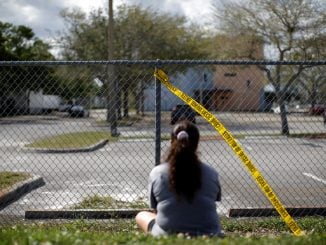
RALEIGH — The annual report documenting crime, discipline and dropout rates for North Carolina K-12 schools shows 11,170 crimes or acts of violence in the total number of crimes during the 2021-22 school year — a 16.9% increase over the previous year.
Similarly, the rate of crime per 1,000 students (7.51 crimes per 1,000 students) increased by 16.3%.
A summary accompanying the report says the data reflects national trends in school discipline and crime statistics linked to the COVID-19 pandemic. The release cites a student behavior survey by the U.S. Department of Education showing 84% either agreed or strongly agreed that the pandemic negatively impacted the behavioral development of students.
The report cautions comparison of past years should consider that crimes decreased during 2020 due to the COVID-19 pandemic school closures.
“We know that the pandemic and its aftermath have created significant challenges for students, educators and their schools,” State Superintendent Catherine Truitt said in the press release. “We’re taking aggressive steps to respond this year, and we’re seeking more resources for next year to provide students with the help that they need.”
The release notes $74 million in School Safety Grants were awarded to the Center for Safer Schools this past fall. The grants went to 200 school districts and charter schools for purchasing safety equipment as well as funding school resource officers and providing training and services for students across the state.
Truitt also cited an additional $17 million in federal grant funding to help 15 school districts increase the number and diversity of mental health service providers in high-needs schools.
There are 16 reportable student crimes contained in the report, nine of which are considered violent acts: assault, assault with a weapon, kidnapping, homicide, rape, sexual assault, sexual offense, and taking indecent liberties with a minor.
The other seven are assault on school personnel, bomb threat, burning a school building, possession of a firearm/explosive, possession of a weapon, possession of a controlled substance, and having alcohol on campus.
The top crime reported in 2021-22 was possession of controlled substances (5,250), followed by possession of a weapon (3,292) and assault on school personnel (1,374). Of the three, possession of a weapon rose 60.4% compared to the 2,053 reported during the 2018-19 pre-pandemic school year.
Notably, rape and indecent liberties with a minor were not reported in 2021-22.
Districts with the highest number of reported crimes include Charlotte-Mecklenburg (1,532), Wake (1,367), Winston-Salem/Forsyth (587) and Guilford (473). Wake County and Charlotte-Mecklenburg are the state’s two largest districts with 2021-22 student populations of 157,849 and 139,492, respectively.
Elementary schools saw possession of a weapon reported more frequently in 2021-22, followed by assault on school personnel, possession of a controlled substance and then possession of alcohol, according to the report. There were 1,427 crimes in 2021-22 with a rate of 2.12 crimes per 1,000 elementary students.
In middle schools, possession of a controlled substance, followed by possession of a weapon, assault on school personnel and possession of alcohol were the most reported crimes. There were 3,747 crimes committed by student offenders resulting in a rate of 10.44 crimes per 1,000 middle school students.
For high schools, the crime reported more frequently was possession of a controlled substance, followed by possession of a weapon, possession of an alcoholic beverage and assault on school personnel.
In the past, reportable crimes are typically committed more frequently by students at the high school level. The high school crime rate for 2021-22 was 13.16 acts of crime and violence per 1,000 high school students in the state. That’s a 23.5% increase from 10.73 in 2018-19.
The five-year difference in the number and rate of high school crimes from the 2017-18 academic year to 2021-22 increased by 9.6% and 10.7% respectively.
There were 217,928 short-term suspensions reported statewide for 2021-22; an increase of 7.2% compared to the 203,298 reported in 2018-19. Historically, males have been suspended more than females, and that trend continued.
Black students had the highest rate of short-term suspensions at 303.78 per 1,000 black students enrolled followed by American Indian students with 242.84 per 1,000 students enrolled, and two or more races students with 178.96 per 1,000 students enrolled.
High schools reported 76,065 short-term suspensions, elementary grades reported 45,291 and middle schools had the highest number with 96,572.
Long-term suspensions also increased, going from 597 in 2018-19 to 693 in 2021-22. The rate of long-term suspensions also increased by 23.3% compared to 2018-19.
The report says there were 48 expulsions across all North Carolina schools during the 2021-22 year. Just over 81% of those expulsions were males. High school students made up 87.5% of those expulsions.
Of the 48 students expelled during 2021-22, 64.6% were black, 18.8% were white, 14.6% were Hispanic, and 2.1% were students of two or more races. Around 12.5% of the 48 were students with disabilities.
The report says 2021-22 was the fourth consecutive academic year where districts reported zero use of corporal punishment.
In terms of dropout rates, there were 11,711 dropouts in Grades 1 through 13, a 17.2% increase from the 9,991 reported in 2018-19. The 2021-22 dropout rate increased just over 12% compared to 2018-19.
High school students were the most frequent to drop out with 10,841 recorded for 2021-22. That is an increase of 14% over the 9,512 reported in 2018-19. Male students made up more than 60% of all high school-level dropouts.



